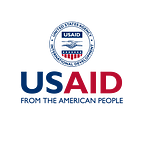Media Literacy: The Other Vaccine
Four reasons media literacy is an important tool for supporting a free press
In recent years, there has been growing attention around the vulnerability of press freedom as an institution. From authoritarian governments working to control internet access and content to malign actors waging disinformation campaigns, fact-based, independent reporting has been under attack.
Some cynics are quick to dismiss today’s media landscape as irrevocably partisan, corrupt, and flooded by disinformation. But this view ignores what economists like Nobel laureate Joseph Stiglitz argue — that information is a public good. That is, journalism’s watchdog role performs a necessary public function of monitoring and accountability, and provides knowledge needed for the population to live healthy, productive, informed lives.
The rise of digital media has helped make information manipulation both more sophisticated and widespread. But, just as most people would not merely accept a broken system when it comes to the power grid, education, or public health, society should not view the media ecosystem as beyond repair. Instead, just like these other social goods, citizens are entitled to transparent, fact-based journalism.
The theme of this year’s World Press Freedom Day is “Information as a Public Good.” Around the world, USAID bolsters press freedom as a cornerstone of a healthy democracy. One key tool in our media development toolbox: media literacy.
1. Media literacy builds critical thinking, digital savvy, and a demand for a free press
From June 2018 to May 2019, the Stanford History Education Group administered an assessment of a national sample of high school students in the United States, gauging students’ ability to evaluate digital sources on the open internet. The results — if they can be summarized in a word — are troubling: Two-thirds of students couldn’t tell the difference between news stories and ads.
Strengthening critical thinking skills is foundational to teaching media literacy. With these skills, news consumers — that’s everyone! — are better able to verify information, separate fact from fiction, create and share fact-based content themselves, and evaluate media in all its forms. With an emphasis on explaining the media’s watchdog role and the critical function it plays in a healthy democracy, media literacy programs also build a deeper understanding of and demand for a free press. Importantly, media literacy also pulls back the curtain to expose how media manipulation works and flows, particularly in the digital environment. For example, in Moldova, USAID’s MEDIA-M program works with partners like the Independent Journalism Center and trolless.com to not only expose disinformation and the threat it poses to civil discourse, but to explain how it works, including tactics like “false amplification” and coordinated inauthentic behavior.
2. Media literacy can be adapted to all learners, in any “classroom”
The media environment is constantly evolving, and people of all age groups and walks of life require the skills necessary to keep up. The good news is that media literacy programs continue to shift as well, aiming to reach more and more people. While media literacy traditionally has been taught in schools, often as part of civic education, experts note that this skill set should be integrated across all subjects, including math and science, as well as outside of the traditional classroom in informal settings.
USAID-linked programs have been pioneering this approach across Eastern Europe and Eurasia. In Armenia, the Media Initiatives Center, a long-time USAID partner, runs the Media.am platform, which monitors how the media reports on topics of public interest and educates consumers on how the industry should work, employing new, creative techniques, including games, traveling and online interactive exhibits, and storytelling. In Ukraine, libraries have become major venues for media literacy work. In 2015, IREX first piloted its Learn2Discern program through support from the Government of Canada using the network of libraries strengthened under a USAID and Bill & Melinda Gates-funded program, among other community institutions, for building resilience to the growing challenge of disinformation.
3. Tracking impact is difficult, but research shows results
Demonstrating definitive, long-term impacts of media literacy programming is challenging, but experts in the field are working to expand and improve studies that make the case for the effectiveness of this tool. In Bosnia-Herzegovina, for example, studies show that USAID youth-focused projects that link media literacy with emotional literacy and inter-ethnic empathy are generating positive momentum on intergroup cohesion and the ability of communities to negotiate deep-seated ethnic and political tensions. And in Indonesia, the use of memes, viral videos, and explainers targeting audiences identified as already consuming socially harmful disinformation has positively impacted these users’ ability to assess the credibility of online information, according to a forthcoming article in the Harvard Misinformation Review.
4. The Takeaway: Media literacy is one tool in the toolbox, not the solution
While media literacy is a flexible instrument able to reach diverse audiences, from youth to adults, and journalists to government officials, it is not a silver bullet. This approach exists within a larger ecosystem of development programming working to strengthen information integrity as a whole. Media literacy programming must operate alongside efforts to strengthen independent media and investigative journalism, and to establish the legal enabling environment that safeguards a free press, including platform accountability and internet governance initiatives. It also requires supporting whole-of-society approaches, like USAID’s program in Georgia, where we collaborate with government, civil society, and trusted policy-shaping partners to holistically address the threat of disinformation.
Be it short-term, long-term, formal, informal, or aimed at students, influencers, judges, or sports figures, media literacy is a critical tool to build resilience against the infodemic that often accompanies elections, health emergencies, disasters, and more.
It’s waterproofing against the firehose of falsehood. It’s the noise-cancelling headphones for when malign actors are practicing censorship through noise. It’s the other vaccine for the other pandemic.
About the Authors
Shannon Maguire is a Media Advisor with USAID’s Bureau for Europe and Eurasia promoting independent media development. Leisha McParland is a Communications Advisor in the same bureau. Follow their work @USAIDEurope.
